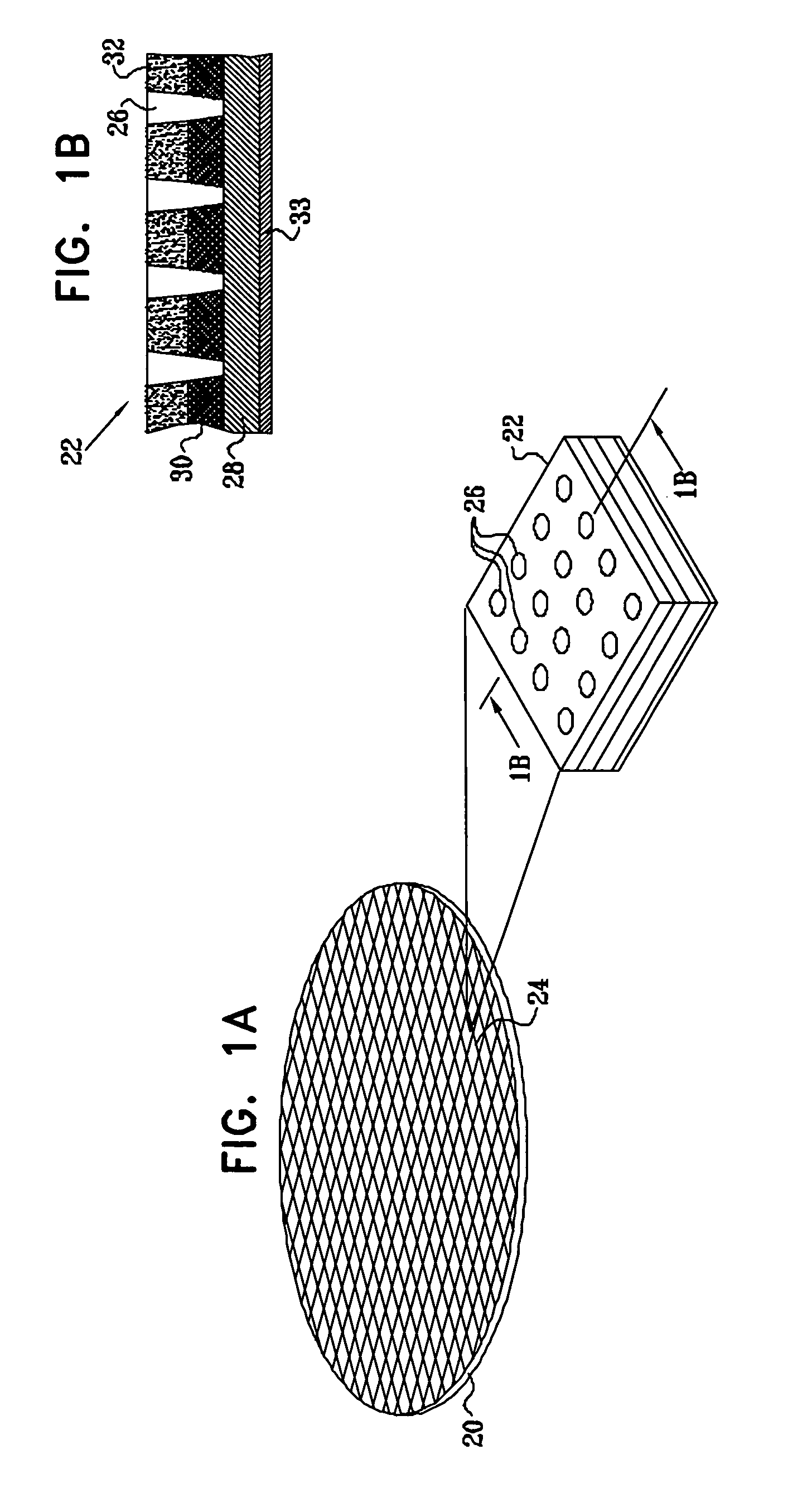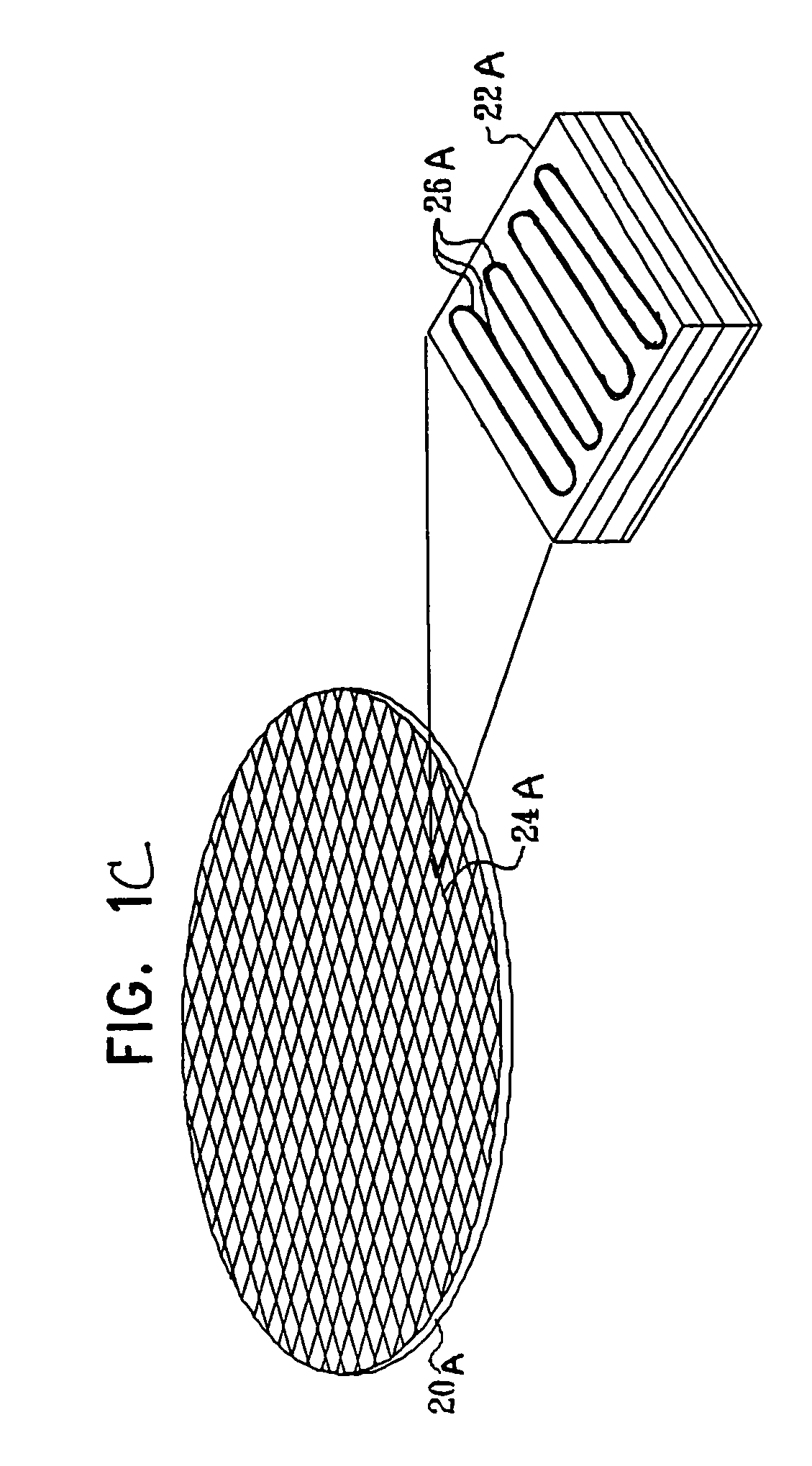Specimen current mapper
a current mapper and current technology, applied in the direction of semiconductor/solid-state device testing/measurement, instruments, nuclear engineering, etc., can solve problems such as process yield loss
- Summary
- Abstract
- Description
- Claims
- Application Information
AI Technical Summary
Benefits of technology
Problems solved by technology
Method used
Image
Examples
Embodiment Construction
[0051]Reference is now made to FIGS. 1A and 1B, which schematically illustrate a semiconductor wafer 20 and details of a pattern 22 of contact holes 26 formed thereon, in accordance with an embodiment of the present invention. FIG. 1A is a top view of the wafer, with the pattern shown enlarged in an inset. FIG. 1B is an enlarged, cross-sectional view of the pattern, taken along line 1B-1B in FIG. 1A. Pattern 22 may be a dedicated test pattern, for use in specimen current mapping, as described below, or it may compnse a group of production contact holes in a known location on wafer 20. (Exemplary test patterns are described in the above-mentioned U.S. patent application Ser. No. 10 / 209,087.) Although only the single pattern 22 is shown in FIG. 1A by way of example, multiple patterns of this sort, distributed over the surface of wafer 20, are used in specimen current mapping. The pattern may also include other types of contact openings, such as trenches or vias. A pattern 22A of trenc...
PUM
 Login to View More
Login to View More Abstract
Description
Claims
Application Information
 Login to View More
Login to View More - R&D
- Intellectual Property
- Life Sciences
- Materials
- Tech Scout
- Unparalleled Data Quality
- Higher Quality Content
- 60% Fewer Hallucinations
Browse by: Latest US Patents, China's latest patents, Technical Efficacy Thesaurus, Application Domain, Technology Topic, Popular Technical Reports.
© 2025 PatSnap. All rights reserved.Legal|Privacy policy|Modern Slavery Act Transparency Statement|Sitemap|About US| Contact US: help@patsnap.com



